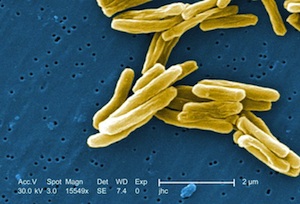Using AI to control energy for indoor agriculture
30 September 2024
Published online 24 March 2015
A new computational technique can now provide clues, not only into how intracellular pathogens interact with hosts, but also how they hide and survive.

© CDC
They applied this new method to study host–pathogen interactions between human and Mycobacterium tuberculosis, the bacterium that causes tuberculosis. Hi-Jack sifted through 287 metabolic pathways in human and 115 metabolic pathways in the bacterium.
By analyzing 5,658 human-specific reactions and 3,942 bacterium-specific reactions, they found that the bacteria hijack compounds from metabolic pathways that make amino acids, carbohydrates and lipids in humans. The bacteria often also steal human compounds to produce metabolites necessary for building its own cell wall.
The researchers traced the hijacked compounds to specific genes that are active in the host’s lungs and lymph nodes where the bacteria reside and proliferate.
“This method will improve our understanding about mechanisms that govern survival of pathogens inside the host, opening avenues for developing effective drugs,” says co-author Dimitrios Kleftogiannis.
It could also potentially be used to study host–pathogen interactions between humans and other intracellular pathogens such as Mycobacterium leprae and Haemophilus influenza, say the researchers.
doi:10.1038/nmiddleeast.2015.56
Stay connected: